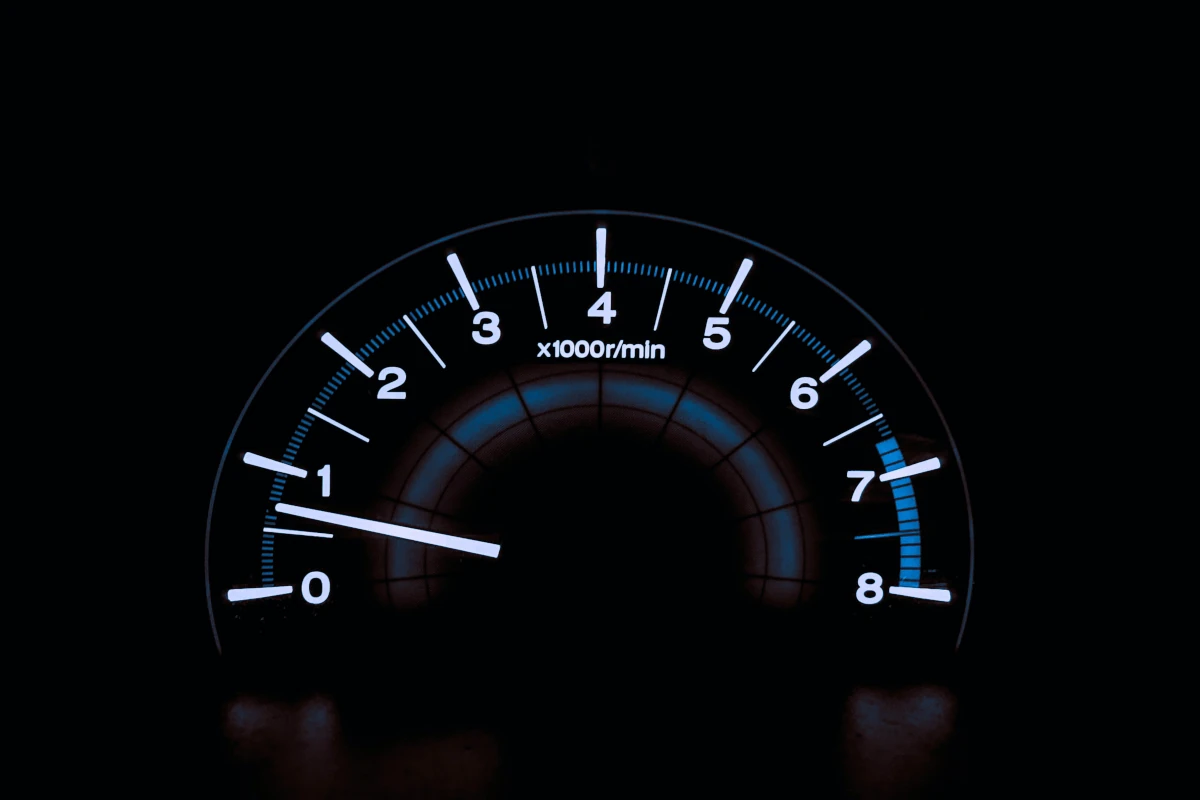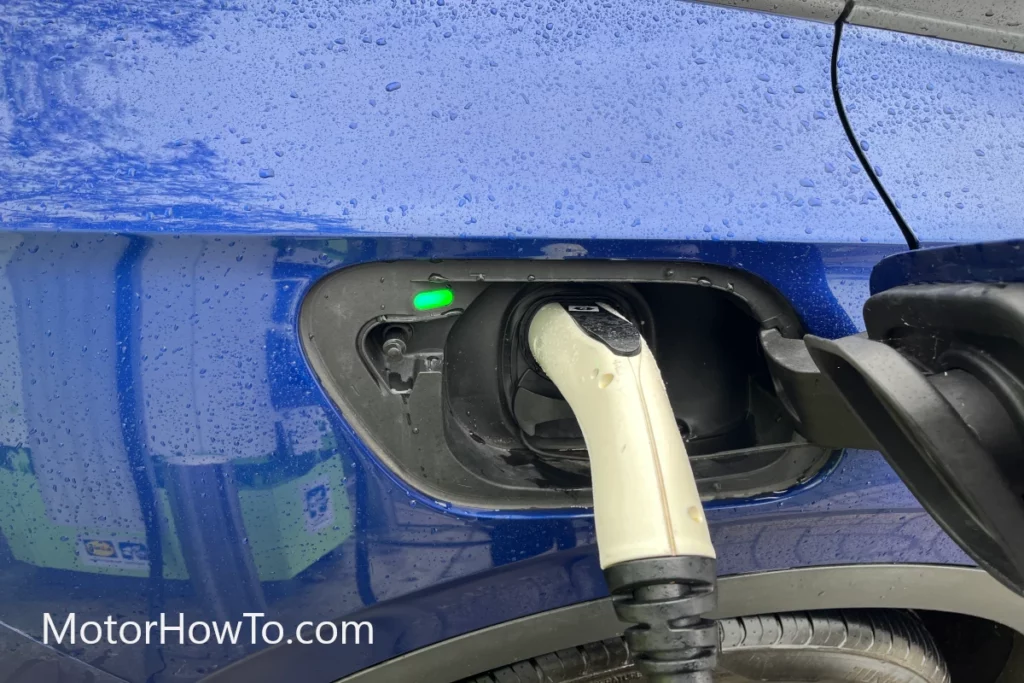Tachometers are useful in a lot of different applications especially when we are talking about anything that’s motor or something that is moving.
That’s because it is capable of measuring a moving object’s revolutions per minute.
Now, with that said, there are now newer types of tachometers called laser or optical tachometers that are now the standard in the industry.
But how does a laser tachometer work?
Laser tachometers work by shining a light source or a laser against something that is rotating or moving. The light source will be reflected by the reflective object on the rotating object. From there, what happens is that the optical sensor on the tachometer receives the signal and measures the speed from that signal.

The fact that laser tachometers work in such a unique way shows us that there are plenty of different technologies that are still evolving and improving.
Of course, the tech that laser tachometers use sounds a bit too simple yet this is something that is far more advanced than the older tachometers. And because of how advanced the tech is, it is considered to be more precise.
How do you use a laser tachometer?
If you are into anything that is mechanical or if you are someone interested in the physics of anything that is moving or spinning, one of the things that you might need to know how to use is a tachometer.
In the most basic sense, a tachometer is capable of measuring how fast a rotating object is moving per minute.
It records its RPM (Revolutions Per Minute), which is usually done through contact.
However, in today’s more modern world, we now have laser tachometers that are capable of actually functioning without making contact with the object that is rotating or moving.
That’s why you may want to use a laser tachometer, which is actually more efficient and just as precise as any other tachometer out there.
But how do you even use a laser tachometer?
To use a laser tachometer, the first thing you need to do is to create a reflective mark on the object that you want to measure.
However, you have to make sure that the rest of the object does not have a reflective surface because you want to make sure that only the reflective surface gets measured by your laser tachometer.
You will understand why this is so later when we explain how a laser tachometer works.
If some of the parts of the moving object are reflective, you can create a white spot using non-reflective tape on it so that only a small spot is reflective.
For the reflective object, you can use something like aluminum foil. You can also use a paint marker to create a white spot on an object that is dull or non-reflective.
From there, point your laser tachometer’s light beam on the spinning shaft. Make sure that, as the object is spinning, the light beam hits the reflective part that you added to the spinning or moving object.
The laser tachometer would now measure the rotations or revolutions per minute made by the moving object.
How does a laser tachometer work?
Now that you already know how to use a laser tachometer, you might be wondering what’s the point of creating a reflective object.
That’s because there is something that you need to understand about how a laser tachometer works.
And that is related to the reflective mark that the spinning object needs to have.
In that case, the laser tachometer works by flashing a beam of light on the surface of something that is moving or rotating.
You need to make sure that the beam of light flashes on the reflective surface because of the very fact that this is the most important part of the way a laser tachometer works.
The reflective surface would then reflect the beam of light back to the tachometer.
From there, the tachometer’s sensors will pick up the reflected light beam every time the tachometer flashes its light beam or laser onto the reflective surface of the spinning object.
Of course, every time the object spins, the laser would hit the reflective surface over and over again.
So, what happens here is that the tachometer would record the speed of the moving object based on how fast the beam of light is reflected back to its sensors.
The time difference between every single time the light is reflected to the tachometer is the basis of how fast the object is moving.
Now, if the light was reflected back to the sensor 1,000 times in a single minute, then the tachometer would measure the object to have an RPM of 1,000.
Are digital laser tachometers any good?
At this point, you already know how to use a digital laser tachometer and how it functions. But why are laser tachometers considered to be more advanced than their older counterparts? Are these tachometers actually any good?
The first thing you need to know about the advantages of a laser tachometer is that it purely uses optics to measure the speed of a rotating object without having to make contact with it.
You have to understand that tachometers that make contact with the spinning object can induce a load on the spinning shaft.
The load could cause errors in the measurement due to the load introduced by a tachometer that needs to make contact with the spinning object.
Of course, a laser tachometer doesn’t even need to make contact with that object and can even measure an object’s rotational speed from a fairly good distance without even requiring you to get quite close to it.
There are even cases where you might not be able to reach the spinning object due to how tight the space is, and that is where a laser tachometer can shine and use its capability of measuring the speed of a moving object from a distance.
Laser tachometers are also more precise than other tachometers on top of how efficient and easy they are to use.
However, the accuracy that a laser tachometer has over other types of tachometers is merely just 0.01% better. Still, that could actually make a big difference when it comes to instances where the measurement needs to be as precise as possible.
Tachometer in cars
In any vehicle or car, the sole purpose of a tachometer is to show the RMP of the engine so you can shift gears accordingly to drive smoothly and without damaging the engine.
The RMP is displayed in numbers and usually a multiple of 1000 (x1000r/min), so if the number on the tachometer shows 1 that means the engine is running at 1×1000 RPM, and if the tachometer show 2 that means the engine is running at 2×1000 RPM and on on.
When the engine running but if the car is idle then the RPM is low and would be reflected on the tachometer but as you give it a bit of gas then the rpm of the engine increases and the dial starts moving accordingly.
All tachometers will show a red indicator toward the end of the dial which is also called a red line. The red line is the maximum RPM that a car’s engine can handle.
Redline is also an indication that it is time to shift the gear upwards. In automatic cars, the shifting is done for you.
Sources
Hackaday: How To Use a Photo Tachometer
E2B Calibrations: Optical and Photo Tachometers



